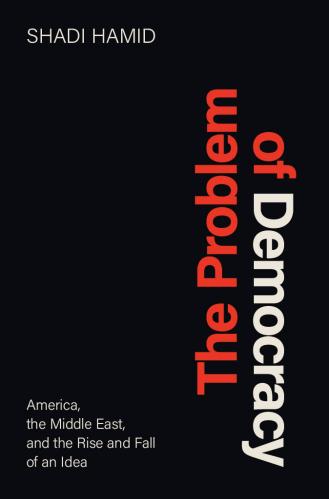The basic contours of the Syria debate have changed very little, writes Shadi Hamid, despite more than five years of brutal civil war. The same perceptions and misperceptions about intervention dominate today. Here’s a practical guide for navigating the key sticking points in this latest iteration of the Syria debate. This piece originally appeared on The Atlantic.
It’s remarkable just how little the basic contours of the Syria debate have changed, despite more than five years of brutal civil war. The same perceptions and misperceptions about intervention dominate today. In some ways, they are even worse now because of the distorting figure of President Donald Trump. Is it possible to separate one’s feelings about the man from the recognition that he is, whether we like it or not, our commander-in-chief?
With this dilemma in mind, here’s a practical guide for navigating the key sticking points in this latest iteration of the Syria debate, from the perspective of someone who has called for direct intervention against Bashar Assad since early on the conflict.
Military action does not equal regime change. The two, understandably, have become conflated because of the Iraq war. But military action can help, rather than undermine, diplomatic efforts. It is abundantly clear that the Assad regime will not negotiate in good faith or make any significant concessions on its own. We’ve hoped for that since the earliest Arab League efforts in 2011. The credible threat of force (or its use) is the only thing that is likely to change Assad’s calculus. If his survival isn’t at stake, he has little reason to negotiate much of anything.
Not everything is Iraq. There is the danger of seeing airstrikes as a low-risk catch-all solution, a kind of military pixie-dust. At the same time, though, not everything is an Iraq-style invasion. America has any number of choices in between these two models of engagement. In Bosnia, air power forced the Serbs to the negotiating table, eventually leading to the Dayton Accords (a key example of military action in the service of diplomacy). Similarly, Moammar Gadhafi’s regime showed an openness to talks only after the 2011 NATO intervention in Libya, with Qaddafi envoys engaging in cease-fire talks within weeks.
The fallacy of anti-interventionism. The presumption is that not acting is neutral. But it’s not. “Do no harm” can do tremendous harm. In the case of Syria, it has. Deciding not to act in the face of war crimes is a very conscious decision. Just as we judge the consequences of intervention, we must be willing to judge the consequences of non-intervention.
Got a better idea? Those who oppose intervention have reasonable objections, especially considering Trump’s apparent lack of thought to a broader strategic vision in Syria (this is my biggest concern). But those who oppose the use of force have never explained what exactly their alternative is. Refusing to intervene against Assad has been U.S. policy since 2011 and the results have proven disastrous, with spillover effects, including massive refugee flows, threatening not just the Middle East but also the very future of the European project. In the policymaking or business world, if a policy consistently fails for half a decade, we would presumably ask its proponents to explain why we should continue to stay the course.
Does Vladimir Putin ever ask, “But what will the U.S. do?”
“Prove it.” Quite understandably, critics of intervention ask its proponents to explain why intervention would be preferable. Over the years, those calling for airstrikes, safe zones, and no-fly and no-drive zones have laid out any number of proposals. But can they prove that their preferred policy course would lead to better outcomes? No, they cannot, but that’s an unrealistic standard that could just as easily be applied to Bosnia, Kosovo, Rwanda, or Kuwait in the lead-up to (actual or potential) interventions in those countries. To apply this standard to policy debates basically means blocking any discussion of alternative options. No one has ever argued that military intervention is risk-free. It entails risks, just as not intervening in the face of a chemical weapons attack also entails risks.
“What will Russia do?” This question has become a common one, but its starting assumptions are suspect. What it translates into is a requirement for preemptive U.S. de-escalation, since the Russians are always likely to react negatively to the use of force against any state actor. It is never made clear why Russia shouldn’t consider the consequences of its own escalations. Does Vladimir Putin ever ask, “But what will the U.S. do?” The United States is the superpower, and not the other way around, and it’s unlikely that Russia will provoke a military confrontation with a superior military force—assuming it knows U.S. threats of military force are credible, which it presumably now knows.
The “imperfect vessel” argument. Trump is, to put it gently, an imperfect vessel, who has rarely, if ever, expressed concern for human rights abuses by Arab dictators (instead, he’s effusively praised them). Always concerned with optics, Trump may believe in “doing something” just for the sake of doing something, without giving thought to broader strategic objectives such as ending the civil war and pressuring the Assad regime to make real concessions to the opposition. But as the prominent Trump critic Jennifer Rubin has argued, the logical conclusion of the “imperfect vessel” argument is that, as long as Trump is president, the United States must avoid all military options that involve nuance and complexity (and every single military operation involves nuance and complexity). This is not quite realistic, since there are at least some military operations, including defensive ones, which the vast majority of Americans would support, no matter who the president was.
These considerations do not mean that intervention, whatever form it takes, is right or that it will succeed. But we should at least be clear about what we are—and aren’t—debating.
The Brookings Institution is committed to quality, independence, and impact.
We are supported by a diverse array of funders. In line with our values and policies, each Brookings publication represents the sole views of its author(s).











Commentary
A practical guide for avoiding fallacies on Syria
April 8, 2017